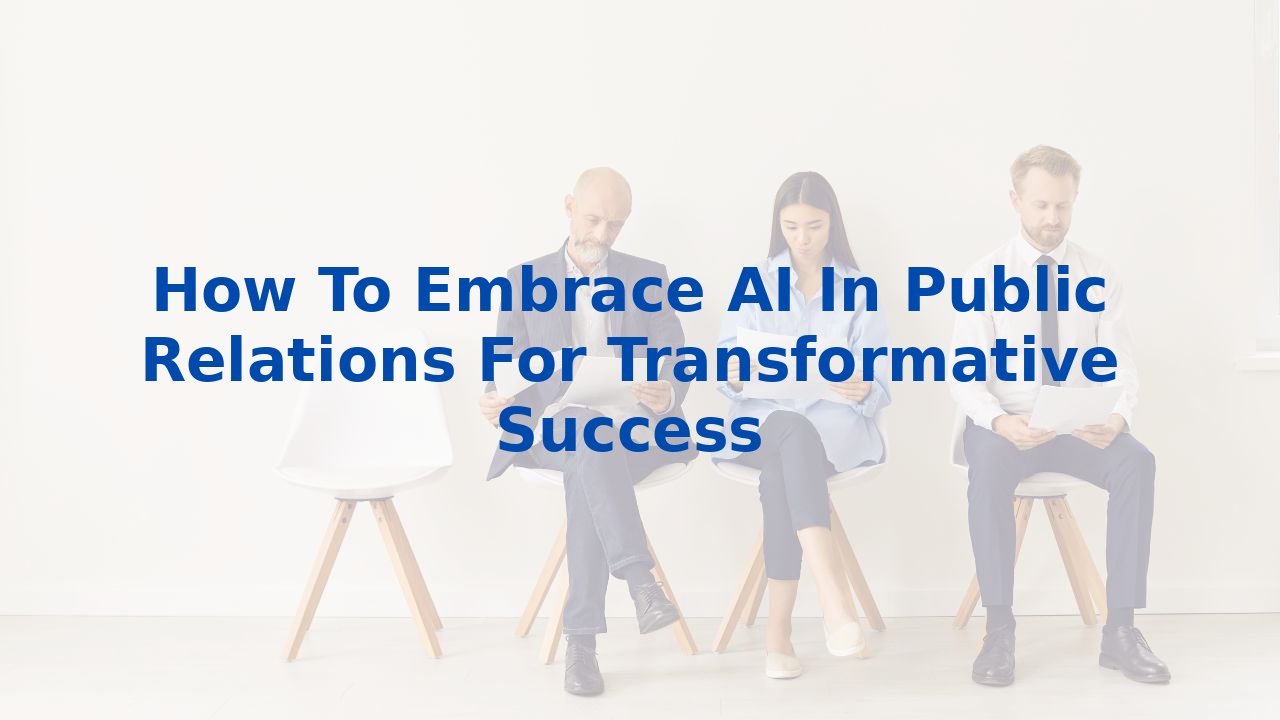How To Embrace AI In Public Relations For Transformative Success
Embracing AI in Public Relations: A Path to Transformation
In today's fast-paced world, the dialogue around artificial intelligence (AI) has reached fever pitch. From client skepticism to employee eagerness, the discourse is as vibrant as it is complex. Picture this scenario: a client shuns AI-generated content, labeling it as superficial and inadequate. Meanwhile, a fretful PR agency contemplates the dire implications of AI replacing content creators. And then, there's the collective grunt of employees eager to harness AI's capabilities, only to feel their aspirations stifled by executive hesitation. Amid this cacophony, the question emerges: how can we leverage AI to enhance business processes in public relations, all while appeasing client concerns and securing employee buy-in?
The Current Landscape: Opportunities Amid Challenges
While perceptions of AI usage may be skewed by isolated anecdotes, the truth is that its implementation in PR remains somewhat nascent—limited to certain functions and often hindered by management hesitance and client scrutiny. Despite these obstacles, AI stands poised to become a game-changer in the PR landscape. The key lies in its ability to address several critical challenges that the industry faces today:
- New Discipline Implementation: As the media landscape evolves, PR professionals must adapt to new communications channels and audience engagement strategies. AI can streamline this transition by providing insights that help teams understand changing consumer behaviors.
- Talent Attraction and Retraining: With AI's analytical capabilities, agencies can pinpoint skill gaps and create tailored training programs. Employees feel empowered when they can incorporate AI skills into their existing roles, enhancing both their competency and job satisfaction.
- Reputation Enhancement: AI can aid in monitoring public sentiment and enabling PR firms to respond proactively to crises, ensuring that reputations are safeguarded. This builds trust, both with clients and the public.
Building Internal Support: The Role of Leadership
To successfully integrate AI into PR processes, it is essential for CEOs and executives to cultivate a culture of innovation. Resistance often springs from fear of the unknown. However, by openly discussing the potential benefits and providing resources for AI training, leaders can alleviate apprehensions. Encouraging a mindset open to experimentation transforms staff fears into excitement about the possibilities.
“The conversation around AI should center around collaboration rather than competition. It complements human creativity rather than replaces it.”
Practical Steps for Implementation
So, where do we begin? Although the prospect of AI may seem daunting, taking small, manageable steps can ease the transition:
- Educate Leadership: Workshops and training sessions designed for executives can demystify AI, helping them appreciate its benefits for the organization and communicate this vision across the workforce.
- Train Employees: Provide teams with access to AI training tailored to their roles. This not only equips them with the skills needed to integrate AI into their work but also instills a sense of ownership in the process.
- Start Small: Encourage teams to develop pilot projects that leverage AI tools for specific tasks. This incremental approach allows for adjustments based on feedback and showcases tangible benefits to skeptics.
Embracing a Future Where Humans and AI Coexist
The anxiety surrounding AI's potential to replace human jobs overlooks a crucial truth: AI is not a competitor; it's an ally. In PR, professionals who embrace AI will find themselves better equipped to handle the complexities of modern communications. By enhancing efficiency, fostering creativity, and refining strategic insights, AI can free up time for PR practitioners to focus on what they do best: crafting compelling narratives and building meaningful relationships.
As the landscape continues to evolve, organizations that equip their employees with AI knowledge will thrive. Cultivating this skill set is vital not just for individual career progression but for the longevity and adaptability of the agency itself.
“In the face of technological upheaval, it's those who prioritize learning and adaptability that will lead the charge into a brighter, AI-augmented future.”
Conclusion: A Call to Embrace Change
While the narrative around AI may be rife with alarmist rhetoric and skepticism, it's critical to recognize the immense potential that lies within adopting AI in PR. By enhancing processes, empowering employees, and fostering leadership support, agencies can position themselves to not only survive but thrive in this new era of communication. The future may be uncertain, but one thing is clear: embracing AI is no longer a luxury; it's a necessity.
Let’s take the first steps together, cultivating a landscape where creativity, technology, and strategy harmoniously coexist, driving the entirety of the PR industry into a future defined by innovation and success.



